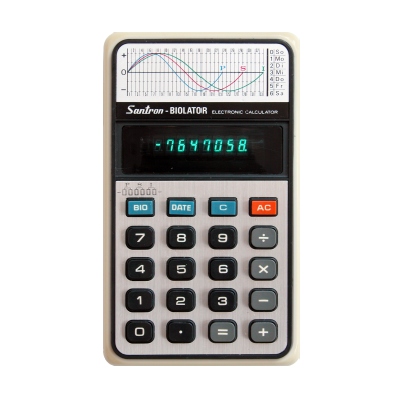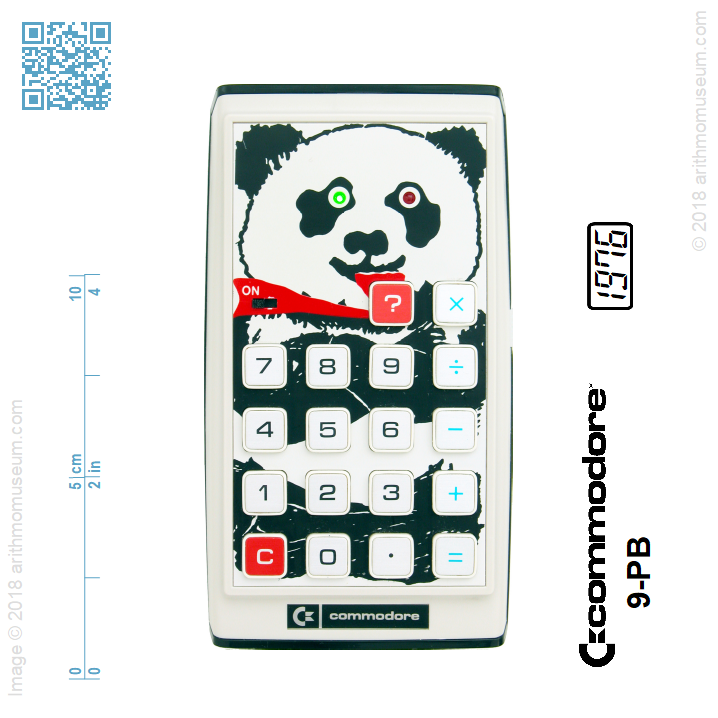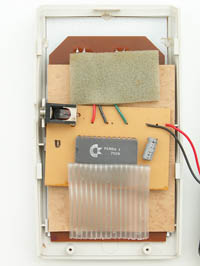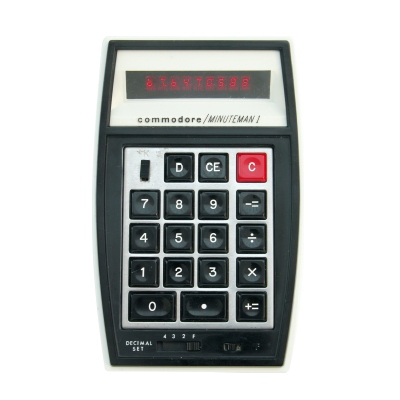Commodore 9-PB
Brief History
Really cheap calculators can be made in 1975-76, so remarkable semidonductor companies have developed circuits for educational tools too. These chips were used for manufacturing the Commodore's first calculator-like toy, the 9-B and 9-PB "Number Facts" in 1976. These machines are usual calculators without expensive displays, these have only two LEDs: the green one stands for indicating correct equation was entered, the red one is for an incorrect one.
| Manufacturer: | Commodore Business Machines (USA/Japan) |
| Mfg. date: | 1976 |
| Size: | 7,7×13,9×2,9 cm |
| Weight (ready for operate): | n.a. |
| Type: | four-function |
| Capacity: | 8 digits (input) 8 digits (internal precision) |
| Operating logic: | algebraic |
| CPU: | Commodore PANDA-1 |
| Registers: | 2 standard (with saving the pending operation) 1 constant (with saving the pending operation) |
| Features: | Ffloating-point notation |
| Display: | none |
| Power: | 9V battery or adaptor |
Detailed Description
Using
Operation of the toy is very simple and similar to ordinary calculators: the [=] key is identical to other arithmetic keys, transfers contents of register X to register Y. The number entered after shifted to X, so pressing [?] compares contents of the two registers. If they are identical, the greed LED switches on, else the red LED lights up. Due to primitive construction of circuitry the green LED may be lights up by entering meaningless keystrokes, e.g. 2 [?], or [=] [?]. The red LED switches on when division by zero was instructed or if the machine detected overflow. The 9-PB calculates answers to 8 digits, so after 2 [÷] 3 [=] we must keying in 8-digit answer for a correct result.
Curiosities:
2 [?] results green, but keying in any other number and [?] lights up the red light.
For [=] [?], or [C] [?] results green.
2 [?] results green, but keying in any other number and [?] lights up the red light.
For [=] [?], or [C] [?] results green.
Similar items







